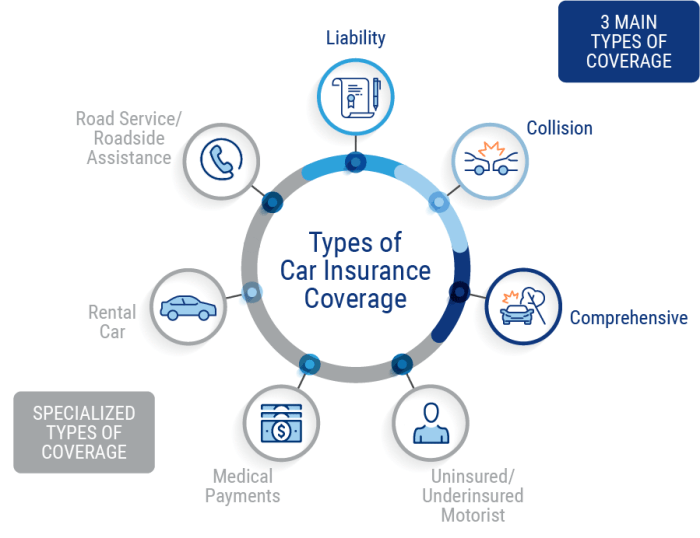Multifamily Investment Property A Guide for Beginners

Multifamily investment property has become increasingly popular in recent years, as investors seek to diversify their portfolios and capitalize on the growing demand for rental housing. From duplexes to apartment buildings, multifamily properties offer a range of investment opportunities, each with its own set of advantages and considerations. This guide will provide you with a comprehensive overview of multifamily investment, covering everything from market analysis to exit strategies.
Investing in multifamily properties can be a rewarding experience, but it requires careful planning and execution. Understanding the intricacies of the multifamily market, evaluating properties effectively, and securing appropriate financing are essential steps in achieving success. By following the strategies and insights presented in this guide, you can navigate the multifamily investment landscape with confidence and maximize your returns.
Introduction to Multifamily Investment Properties

Multifamily investment properties are a significant segment of the real estate market, encompassing residential buildings designed to house multiple families or individuals. These properties offer a diverse range of investment opportunities, attracting both individual and institutional investors.
The appeal of multifamily investments stems from their potential for generating stable and consistent income streams, coupled with the potential for appreciation over time.
Types of Multifamily Properties
Multifamily properties come in various forms, each with its unique characteristics and investment considerations.
- Duplexes: These properties consist of two separate units, typically sharing a common wall. Duplexes are often considered a good entry point for first-time multifamily investors, offering relatively lower investment costs compared to larger properties.
- Triplexes: As the name suggests, triplexes feature three separate units, offering more rental income potential than duplexes. These properties can be a step up for investors seeking to increase their portfolio size and cash flow.
- Fourplexes: Similar to triplexes, fourplexes comprise four units, providing even greater rental income potential. They can be a suitable choice for investors looking for a larger investment with more substantial cash flow.
- Apartment Buildings: Apartment buildings encompass multiple units, ranging from a few to hundreds. These properties offer significant rental income potential but also require more significant capital investment and management expertise.
Benefits of Investing in Multifamily Properties
Investing in multifamily properties presents several potential benefits, making them an attractive investment option for various investors.
- Stable Income Streams: Multifamily properties generate consistent rental income, providing a steady cash flow for investors. This stability can be particularly appealing during economic fluctuations.
- Appreciation Potential: As property values tend to appreciate over time, multifamily investments can offer long-term capital gains. This appreciation potential can further enhance the overall return on investment.
- Tax Advantages: Investors can benefit from various tax advantages associated with multifamily property ownership, including deductions for mortgage interest, property taxes, and depreciation.
- Hedge Against Inflation: Rental income from multifamily properties can increase with inflation, providing a hedge against rising costs. This can help preserve the real value of the investment over time.
- Diversification: Multifamily investments offer a diversification strategy for investors seeking to spread their risk across different asset classes. They can complement other investments, such as stocks or bonds.
Evaluating Multifamily Properties

Evaluating multifamily properties is crucial for making informed investment decisions. A thorough assessment ensures you understand the property’s potential and risks, allowing you to make a sound investment.
Evaluating Key Factors
It’s essential to consider several factors when evaluating a multifamily property. These factors can be categorized into location, condition, and rental income potential.
- Location:
- Proximity to amenities, such as schools, shopping centers, and public transportation.
- Crime rates and neighborhood safety.
- Local job market and economic growth potential.
- Competition from other rental properties in the area.
- Condition:
- Age and condition of the building, including the roof, plumbing, electrical systems, and HVAC.
- Maintenance history and any deferred maintenance needs.
- Exterior condition, including landscaping and parking areas.
- Interior condition of units, including appliances, flooring, and paint.
- Rental Income Potential:
- Current market rents for comparable units in the area.
- Occupancy rate and history of tenant turnover.
- Potential for rent increases based on market demand.
- Operating expenses, including property taxes, insurance, utilities, and maintenance costs.
Identifying Potential Risks and Opportunities
Once you’ve assessed the key factors, you need to identify potential risks and opportunities associated with the investment.
- Risks:
- Vacancy risk: The potential for units to remain vacant, reducing rental income.
- Interest rate risk: The possibility of rising interest rates increasing borrowing costs.
- Property value risk: The potential for the property’s value to decline due to economic factors or changes in market conditions.
- Tenant risk: The possibility of encountering difficult or problematic tenants.
- Maintenance risk: Unexpected maintenance expenses, such as repairs or replacements.
- Opportunities:
- Value-add opportunities: Potential to increase the property’s value through renovations, upgrades, or improvements.
- Rent growth potential: The possibility of increasing rental rates based on market demand.
- Tax benefits: Potential for tax deductions and depreciation benefits.
- Strong market fundamentals: A favorable market with strong rental demand and low vacancy rates.
- Potential for appreciation: The possibility of the property’s value increasing over time.
Conducting Due Diligence
Due diligence is a crucial step in evaluating a multifamily property. It involves a thorough investigation to verify information, identify potential risks, and assess the investment’s viability.
- Review financial statements: Analyze income and expense statements, cash flow projections, and historical performance data.
- Inspect the property: Conduct a physical inspection of the building and units to assess their condition and identify any potential maintenance issues.
- Obtain appraisals and market studies: Seek professional assessments of the property’s value and the local rental market.
- Review legal documents: Examine the property’s title, leases, and other legal documents to ensure they are in order.
- Conduct tenant interviews: Speak with existing tenants to gather insights into their experiences and satisfaction levels.
Financing Multifamily Investments

Securing financing is a crucial step in any multifamily investment. Understanding the different financing options available, their terms, and how to calculate potential returns is essential for making informed decisions. This section explores various financing methods and provides insights into evaluating their suitability for your investment goals.
Types of Financing
The types of financing available for multifamily investments can be broadly categorized into two main groups: traditional mortgages and private loans.
- Traditional mortgages are typically offered by banks, credit unions, and other financial institutions. These loans are usually secured by the property itself and have fixed or adjustable interest rates. The terms of traditional mortgages vary depending on the lender, but they generally require a down payment, monthly payments, and a specific loan-to-value ratio.
- Private loans, also known as hard money loans, are typically provided by private investors or lending firms. They are often used for short-term financing or for projects that may not qualify for traditional mortgages. Private loans usually have higher interest rates and shorter terms than traditional mortgages, but they can offer greater flexibility and faster approval times.
Understanding Loan Terms
It’s crucial to carefully analyze the terms of any loan before committing to financing. Key aspects to consider include:
- Interest Rates: Interest rates directly impact the cost of borrowing. Lower interest rates lead to lower monthly payments and higher returns on investment.
- Loan Terms: The length of the loan, or the term, influences the monthly payment amount and the overall interest paid. Longer terms generally result in lower monthly payments but higher overall interest costs.
- Debt-to-Equity Ratio: This ratio measures the amount of debt used to finance the investment relative to the equity invested. A higher debt-to-equity ratio can increase potential returns but also increases financial risk.
Calculating Return on Investment
Understanding how to calculate the potential return on investment for a multifamily property is crucial for evaluating the financial viability of a project. A common metric used is the cash-on-cash return, which measures the annual cash flow generated by the property as a percentage of the initial equity investment.
Cash-on-Cash Return = (Annual Cash Flow) / (Initial Equity Investment)
For example, if an investor invests $100,000 in equity and the property generates an annual cash flow of $15,000, the cash-on-cash return would be 15%. This indicates that the investor is receiving a 15% return on their initial investment.
Evaluating Financing Options
When choosing a financing option, consider factors such as:
- Loan Purpose: Is the financing for a short-term project or a long-term investment?
- Creditworthiness: What is your credit score and financial history?
- Property Type: Does the property meet the lender’s criteria?
- Loan Terms: What are the interest rates, terms, and fees?
By carefully evaluating the available financing options and their terms, investors can make informed decisions that align with their investment goals and risk tolerance.
Managing Multifamily Properties
Effective multifamily property management is crucial for maximizing returns and ensuring long-term success. It involves a delicate balance of attracting and retaining tenants, maintaining the property, and handling finances. This section delves into key aspects of multifamily property management, providing insights and practical tips to help you navigate this critical stage of your investment journey.
Tenant Screening, Multifamily investment property
Thorough tenant screening is the foundation of successful multifamily property management. It helps minimize the risk of tenant issues, such as non-payment, property damage, and legal disputes.
- Credit Checks: A credit check provides insights into a potential tenant’s financial history, indicating their ability to meet their financial obligations.
- Background Checks: A background check verifies a tenant’s identity and reveals any criminal history, providing an additional layer of safety for your property and other tenants.
- Rental History: Contacting previous landlords can provide valuable information about a tenant’s past rental behavior, including payment history and property maintenance practices.
- Employment Verification: Confirming a tenant’s employment status ensures they have a stable income source to cover rent payments.
- Reference Checks: Contacting personal references can provide additional insights into a tenant’s character and trustworthiness.
Rent Collection
Efficient rent collection is vital for maintaining cash flow and ensuring the financial stability of your investment.
- Establish Clear Payment Policies: Clearly Artikel rent payment due dates, acceptable payment methods, and late payment penalties in your lease agreement.
- Utilize Online Payment Platforms: Online payment platforms simplify rent collection, allowing tenants to pay rent electronically and providing you with timely access to funds.
- Automated Reminders: Set up automated reminders to alert tenants about upcoming rent payments, minimizing late payments and potential disputes.
- Prompt Follow-Up: Address late payments promptly, communicating with tenants and taking appropriate action as needed.
Property Maintenance
Regular and proactive property maintenance is essential for preserving the value of your investment and attracting and retaining tenants.
- Preventative Maintenance: Schedule regular maintenance checks for key systems, such as HVAC, plumbing, and electrical, to identify and address potential issues before they become major problems.
- Respond to Tenant Requests: Address tenant maintenance requests promptly and professionally, ensuring timely repairs and minimizing tenant dissatisfaction.
- Landscaping and Common Area Maintenance: Maintain well-kept landscaping and clean common areas to create a positive living environment and enhance the overall property value.
- Emergency Response: Establish a system for handling emergency situations, such as plumbing leaks or power outages, to minimize damage and inconvenience for tenants.
Building Relationships
Cultivating strong relationships with tenants and local service providers is a key element of successful multifamily property management.
- Communication: Maintain open and clear communication with tenants, addressing their concerns and requests promptly.
- Respect and Fairness: Treat tenants with respect and fairness, enforcing lease terms consistently and addressing issues with empathy.
- Community Building: Organize community events or initiatives to foster a sense of belonging and encourage positive tenant interactions.
- Service Provider Network: Establish a network of reliable and trustworthy service providers, such as plumbers, electricians, and contractors, for efficient and cost-effective property maintenance.
Property Management Software
Property management software can streamline operations, automate tasks, and improve efficiency.
- Tenant Screening: Software can automate tenant screening processes, simplifying background checks and credit checks.
- Rent Collection: Automated rent collection features allow tenants to pay rent online and provide you with real-time payment tracking.
- Maintenance Requests: Property management software enables tenants to submit maintenance requests online, facilitating efficient tracking and scheduling.
- Financial Management: Software can help manage finances, track expenses, and generate reports, providing valuable insights into property performance.
Tax Considerations for Multifamily Investments
Owning and operating multifamily properties come with a unique set of tax implications that can significantly impact your bottom line. Understanding these tax considerations is crucial for maximizing your returns and minimizing your tax liability. This section will delve into the key tax aspects of multifamily investments, including depreciation, capital gains, and rental income deductions, providing insights into how to leverage these aspects to your advantage.
Depreciation
Depreciation is a significant tax benefit for multifamily investors, allowing you to deduct a portion of the property’s value each year as it wears down. This deduction reduces your taxable income, ultimately leading to lower tax payments. The depreciation process is based on the IRS-approved “useful life” of the property, which for residential rental properties is typically 27.5 years.
For example, if you purchase a multifamily property for $1 million and the IRS assigns a useful life of 27.5 years, you can deduct approximately $36,364 in depreciation annually. This deduction can be claimed on your tax return each year, lowering your taxable income and ultimately saving you money in taxes.
Capital Gains
When you sell a multifamily property, you’ll likely realize a capital gain, which is the difference between the selling price and your adjusted cost basis. Capital gains are subject to taxation at various rates, depending on your holding period and tax bracket.
For example, if you sell a property for $1.5 million after holding it for more than a year and your adjusted cost basis is $1 million, you’ll realize a capital gain of $500,000. This gain will be taxed at the long-term capital gains rate, which is generally lower than the ordinary income tax rate.
Rental Income Deductions
As a multifamily property owner, you can deduct various expenses related to your rental operations from your rental income, lowering your taxable income. These deductions can include:
- Mortgage interest
- Property taxes
- Insurance premiums
- Maintenance and repairs
- Utilities
- Management fees
- Depreciation
By carefully tracking and documenting these expenses, you can significantly reduce your taxable income and increase your after-tax returns.
Minimizing Tax Liabilities and Maximizing Tax Benefits
Here are some strategies for minimizing your tax liability and maximizing tax benefits:
- Properly Structure Your Investment: Choosing the right entity structure for your investment can significantly impact your tax liability. Consult with a tax advisor to determine the most advantageous structure, such as an LLC or S-corporation, based on your specific circumstances.
- Maximize Depreciation Deductions: Accurately calculate and claim depreciation deductions to reduce your taxable income. Ensure you’re using the correct depreciation method and schedule for your property.
- Utilize Tax-Deferred Exchange Strategies: A 1031 exchange allows you to defer capital gains taxes when selling a property by reinvesting the proceeds into another qualifying property. This strategy can help you grow your portfolio while minimizing tax liability.
- Consider Tax-Advantaged Investments: Explore tax-advantaged investment options, such as Opportunity Zones, which offer tax benefits for investing in designated low-income communities.
Consulting with a Qualified Tax Advisor
Navigating the complex tax landscape of multifamily investments is essential to ensure you’re maximizing your tax benefits and minimizing your liability. Consulting with a qualified tax advisor who specializes in real estate investments is highly recommended. They can provide tailored advice based on your specific circumstances, helping you make informed decisions that optimize your tax position and maximize your returns.
Exit Strategies for Multifamily Investments
Exiting a multifamily investment is a crucial part of the investment cycle, and having a well-defined exit strategy can significantly impact your overall returns. An exit strategy Artikels how you plan to sell or otherwise dispose of your investment property, maximizing your profits and minimizing potential risks.
Selling the Property
Selling the property is the most common exit strategy for multifamily investors. It involves finding a buyer who is willing to purchase the property at a price that meets your investment goals. To maximize returns when selling, consider these factors:
- Timing: Market conditions play a significant role in property values. Selling during a strong market can yield higher returns.
- Property Condition: A well-maintained property with updated amenities is more attractive to potential buyers and can command a higher price.
- Marketing: Effective marketing strategies can attract a wider pool of potential buyers, leading to more competitive offers.
Refinancing
Refinancing involves obtaining a new loan to replace an existing one, often with better terms or a lower interest rate. This can be a viable exit strategy if you want to unlock equity in the property or reduce your monthly payments.
- Equity Release: Refinancing can allow you to access a portion of the equity you’ve built up in the property, which can be used for other investments or personal expenses.
- Lower Interest Rates: If interest rates have declined since you took out your initial loan, refinancing can lower your monthly payments and free up cash flow.
- Debt Consolidation: Refinancing can be used to consolidate multiple loans into one, simplifying your debt management.
Passing it Down to Heirs
Passing down a multifamily investment property to heirs can be a valuable estate planning strategy. This involves transferring ownership of the property to your beneficiaries, allowing them to inherit the asset and potentially generate income from it.
- Tax Advantages: Depending on your jurisdiction, passing down a property to heirs may offer tax advantages compared to selling it.
- Generational Wealth Building: It allows you to transfer wealth to future generations, potentially creating a legacy of financial security.
- Family Business Continuity: If your multifamily investment is a family business, passing it down can ensure its continued operation and potentially create opportunities for future generations.
Importance of Planning
Having a well-defined exit strategy is crucial for multifamily investments. It helps you:
- Set Realistic Goals: By planning your exit, you can set clear investment goals and align your strategies accordingly.
- Minimize Risks: An exit strategy helps you identify and mitigate potential risks associated with your investment.
- Maximize Returns: By carefully considering your options and timing your exit strategically, you can maximize your profits and achieve your investment objectives.
Investing in multifamily properties can be a complex endeavor, but it can also be incredibly rewarding. By carefully considering the factors Artikeld in this guide, you can make informed decisions and navigate the multifamily investment market with confidence. Remember, thorough research, due diligence, and a well-defined exit strategy are crucial for success in this field. As you embark on your multifamily investment journey, keep in mind that the key to maximizing your returns lies in a combination of knowledge, strategic planning, and a commitment to long-term growth.
Helpful Answers: Multifamily Investment Property
What are the risks associated with multifamily investment?
Risks in multifamily investing include vacancy rates, tenant issues, property maintenance costs, market fluctuations, and interest rate changes. However, these risks can be mitigated through thorough research, due diligence, and effective property management.
How do I find a reliable property manager for my multifamily investment?
Look for property managers with a proven track record, positive reviews, and experience in managing multifamily properties. Consider their fees, services, and communication style. It’s also beneficial to interview multiple managers and compare their proposals.
What are the tax benefits of owning a multifamily property?
Tax benefits for multifamily property owners include deductions for depreciation, mortgage interest, property taxes, insurance, and repairs. You can also deduct rental expenses and losses. However, it’s crucial to consult with a tax advisor to understand the specific tax implications of your investment.









